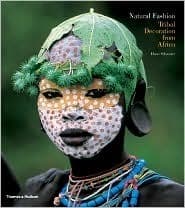
Book Review Summary: Natural Fashion: Tribal Decoration from Africa
Introduction
"Natural Fashion: Tribal Decoration from Africa" by Hans W. Silvester offers a captivating glimpse into the imaginative body decoration and embellishments of the Omo people, a nomadic tribe in Ethiopia's Omo Valley. Through a series of stunning photographs, Silvester showcases the unique and increasingly fragile way of life of these tribes, threatened by conflict, climate change, and tourism. The book is a visual feast, featuring 160 color illustrations that highlight the creativity and resourcefulness of the Omo people in adorning themselves with natural materials.
About Hans W. Silvester
Hans W. Silvester, the author of "Natural Fashion: Tribal Decoration from Africa," is a renowned photographer known for his work documenting tribal cultures around the world. With a focus on capturing the beauty and diversity of traditional practices, Silvester has traveled extensively to remote regions, immersing himself in the daily lives of indigenous communities. His photographic work has been widely acclaimed for its ability to transport readers to distant lands and reveal the richness of human expression.
Analysis of Views
- Beauty and Creativity: Many readers praise the book for its stunning visuals, highlighting the intricate and imaginative body decorations created by the Omo people using natural materials. The photographs showcase the tribes' ability to transform leaves, roots, seeds, and flowers into accessories that are both functional and aesthetically pleasing.
- Fashion as an Essential Component of Being Human: Some readers argue that fashion is not trivial but an essential component of being human, as seen in the way the Omo people adorn themselves for personal pleasure. The book demonstrates that fashion can be a form of self-expression and a way to connect with one's identity and community.
- Inspiration for Creatives: The book is also recommended for creatives, as it serves as a source of inspiration for artists, designers, and anyone interested in exploring the intersection between art and culture. The photographs offer a unique perspective on how natural materials can be transformed into wearable art, challenging traditional notions of fashion and beauty.
- Lack of Textual Information: While the book features stunning images, some readers express disappointment with the lack of textual information accompanying them. They feel that more detailed captions or commentary could have enhanced their understanding of the cultural significance behind the photographs and provided additional context for the viewer.
- Touristic Element: A few readers perceive the book as touristic in nature, with an emphasis on showcasing beautiful people in floral headdresses without sufficient background information or commentary. They compare it to early National Geographic or "The Secret Museum of Mankind," which they find more informative and annotated.
Reasons for Recommendation
- Beauty and Creativity: The book's primary appeal lies in its stunning visuals, which showcase the creativity and resourcefulness of the Omo people in adorning themselves with natural materials. Readers recommend it as a must-read for anyone interested in fashion, art, or photography.
- Inspiration for Creatives: The book serves as an inspiration for creatives, offering a unique perspective on how natural materials can be transformed into wearable art. It challenges traditional notions of fashion and beauty, making it a valuable resource for artists and designers seeking inspiration.
- Cultural Significance: Despite the lack of textual information, readers appreciate the cultural significance behind the photographs. They recognize the importance of preserving traditional practices and celebrating the richness of tribal cultures, which are increasingly threatened by modernization and globalization.
Reasons for Not Recommendation
- Lack of Textual Information: Some readers find the lack of textual information in the book to be a drawback. They feel that additional captions or commentary would have enhanced their understanding of the cultural significance behind the photographs and provided additional context for the viewer.
- Touristic Element: A few readers perceive the book as touristic in nature, focusing on showcasing beautiful people in floral headdresses without sufficient background information or commentary. They compare it to other books with more detailed annotations and find it less informative in that regard.
Conclusion
"Natural Fashion: Tribal Decoration from Africa" by Hans W. Silvester offers a captivating glimpse into the imaginative body decoration and embellishments of the Omo people, a nomadic tribe in Ethiopia's Omo Valley. Through stunning photographs, Silvester showcases their creativity and resourcefulness in adorning themselves with natural materials, highlighting their unique way of life threatened by conflict, climate change, and tourism. While some readers appreciate the beauty and creativity displayed in the book, others wish for more textual information to enhance their understanding of cultural significance. Overall, "Natural Fashion" serves as an inspiration for creatives and a celebration of tribal cultures, offering a visual feast that transports readers to distant lands and reveals the richness of human expression.